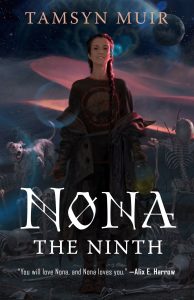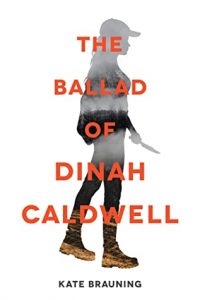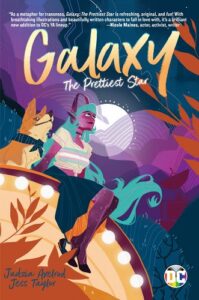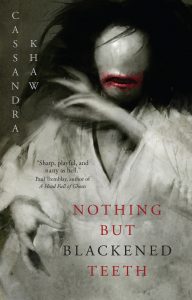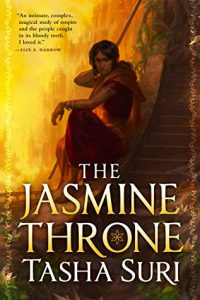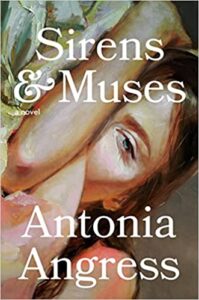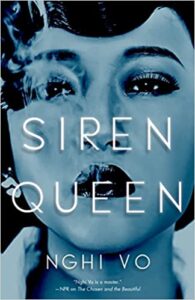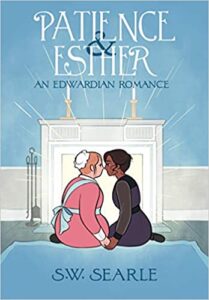Amazon Affiliate Link | Bookshop.org Affiliate Link
ʼTis at last that most frightful and morbid of months, a spooky season of ghosts and ghouls, the danse macabre we raise our jaded bones to join but once each year—October is here! And not a moment too soon, because it’s time to check in on everyone’s favorite lesbian necromancers from space. Three years ago, Harrow the Ninth managed to be both a hotly anticipated and shockingly unexpected followup to Tamsyn Muir’s debut novel. But after collectively turning our minds into pretzels trying to figure out what exactly was happening there, we finally have part three of the Locked Tomb series in Nona the Ninth.
Now, if you haven’t been keeping up with news of the series since you put down Harrow, you might be wondering—wasn’t the third book in the trilogy going to be Alecto the Ninth? And you wouldn’t be wrong. Alecto the Ninth is listed in all books published so far, and according to the author, the Locked Tomb was indeed intended to be a trilogy from the beginning. But Tamsyn Muir has since revealed that the first act of the novel ballooned while she was writing it, to the point that Muir’s editor forced her to break the manuscript into two books instead.
When I heard this news in the lead-up to Nona the Ninth’s release, I made peace with the possibility that previous protagonists Gideon and Harrow might not appear in this book at all. As it turns out, that was a very practical emotional defense to have going into Nona. If your only interest in these books is seeing more interactions between Gideon and Harrow, I don’t think you’ll like this particular novel. Which is a shame, because Nona the Ninth does a lot of other really neat things for the Locked Tomb quartet—and I say this as someone who has written extensively here about how much I love Gideon and Harrow! But here we get to see a side of Muir’s universe that we’ve only ever gotten hints at, and the characters she does choose to focus on definitely earn that spotlight. It’s not as surrealistically baffling as Harrow the Ninth was, but Muir doesn’t settle back into the comfortable foundations that I see now she was laying in Gideon the Ninth. I got a sense of Muir still pushing herself as an author, experimenting with form and narrative in exciting ways.
Because beyond the exposition and plot twists and preparation for the next book, Nona the Ninth grapples with some really compelling questions. What does it mean to love someone? Where do we look to find God, and what makes them worthy of our love—especially when God hurts us? What makes us worthy of the world’s love, after all we’ve done to hurt it? While Harrow the Ninth was unambiguously a book about grief, Nona plunges deep into the waters of family, faith, and forgiveness, all through the eyes of a girl who just wants one last birthday party before it’s too late.
I fully expect Alecto the Ninth to cast new light on the enigmas of Nona when it comes out. One of the really astounding things about the Locked Tomb series is how each book informs and illuminates the ones that came before. It makes them eminently re-readable, as each time through you see more and more pieces coming together to form a thematic whole. However, it also means that there is a lot of relying on faith that Tamsyn Muir will be able to cash the check she’s written with all this set-up, and I understand why some fans are looking at the looming end of the series with trepidation. Personally, I’m still safely on the side of eager anticipation for the series finale—though not as impatiently as I was between Gideon and Harrow. Even if the wait is long, I actually think Nona the Ninth provides exactly the kind of layered, thoughtful, yet charming company we need to make it through in the meantime.
Content Warnings: gore, violence, apocalypse
Samantha Lavender is a lesbian library assistant on the west coast, making ends meet with a creative writing degree and her wonderful butch partner. She spends most of her free time running Dungeons & Dragons (like she has since the 90’s), and has even published a few adventures for it. You can follow her @RainyRedwoods on both twitter and tumblr.

